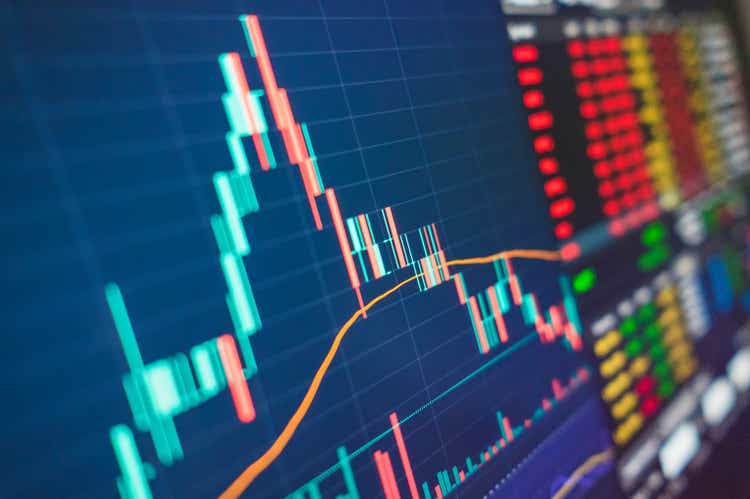primeimages
Yes, and how many times can a man turn his head
And pretend that he just doesn’t see?
The answer, my friend, is blowin’ in the wind
The answer is blowin’ in the wind
– Bob Dylan
The markets are getting buffeted. It is just not one headwind, but a large number of them. Make sure that you take the time to see them and assess them, because your portfolios are right in their sights.
First off is inflation – the causes of it, the roots of it, and when they all might calm down. It is oil, natural gas, prices at the pump, prices at the grocery store, a war in Europe, our government with its head in the clouds, and the resultant damage – cost – from all of these things that is heading at us. Right at us.
Whoosh!
Then, right behind them, trying to “blow the old man down,” is the Fed, raising rates, promising to continue to do so, and cutting their balance sheet as part of their solution to our high-inflation problem. You can look at what data you like, but the Producer Price Index now sits at 11.3%, and this index leads the Consumer Price Index (CPI), as production always comes in front of consumption. With the CPI Index at 9.1%, we now find an average, using both indexes, showing overall inflation at 10.2%. This number is critical, in my opinion, for making decisions about investing.
You can use appreciation plays, income plays, or some combination of both, but if your returns are not exceeding our 10.2% number, then you are losing at the Great Game. That is my opinion. Consequently, the notion of cash, maybe yielding 1.5% now, after the Fed’s raise in rates, is still a decided negative of 870 basis points to our average rate of inflation. Cash is only king if you are playing the “market timing game,” and that strategy has a long history chock full of misses as compared with the hits.
On top of all of this, labor costs have surged 5.1% on a year-over-year basis, which is the largest rise since the current series started in 2001, after rising 4.5% in the first quarter. Inflation, however, it should be noted, has eroded these gains. Inflation-adjusted labor costs fell 3.6%, on a year-over-year basis. Nothing pretty in that picture.
The Treasury market is flummoxed by all of this. In fact, I would say it is in disarray. One might rationally think that Treasuries would have headed into higher yields, given the Fed’s moves, but that is not the case. Yields are lower, with the 10-year at 2.65% as of Friday’s close, which is the lowest yield on the yield curve out through 10 years and down from the 3.50% level that it attained in June. You can point to disillusionment with the Fed’s policies, gauges of business activity, housing, and consumer confidence as some of the reasons for the decline.
What is obviously happening, given the market conditions, is that the fear of recession has overcome the fear of higher rates. U.S. gross domestic product (GDP) contracted 0.9% in the second quarter, following a decline of 1.6% in the first quarter. By the classic definition, we are now in a recession, even if those in some quarters refuse to accept it or admit it. It is frequently amazing when the economic definitions do not agree with the political definitions, but then the strange bedfellows in politics always seem to end up in rancorous pillow fights.
Upcoming this week will be more headwinds blown at the markets.
Aug. 1: ISM and S&P Global manufacturing gauges; construction spending
Aug. 2: JOLTS job openings; vehicle sales
Aug. 3: ISM and S&P Global services gauges, factory orders; MBA mortgage applications
Aug. 4: Jobless claims; trade balance; Challenger job cuts
Aug 5: Employment report; consumer credit
Next we have the dollar, barely 2 cents away from parity with the euro, and earnings. With 52% of the S&P 500 having reported second-quarter earnings already, 73% beat profit estimates by a median of 7%. The winds, you see, are blowing in from all directions, which makes predicting either the bond or equity markets a proposition that is far more than usually difficult.
One of the collateral damages of the Fed raising rates are higher borrowing costs. U.S. banks JPMorgan Chase & Co., Citigroup, and Wells Fargo all raised their prime lending rates by 75 bps to 5.5% last Wednesday as a direct reaction to the Federal Reserve’s latest interest rate move. Higher borrowing costs are also have serious effects on mortgage rates, credit card rates, home equity lines of credit, longer loans at the banks for commercial real estate, and mergers & acquisitions. This eventually, in my view, will be a negative for corporate revenues and profits, and this is something that I would bear in mind, especially for companies with large stockpiles of debt.
Bonds of any type have not crossed my line of inflation either. Bloomberg data shows that investment grade corporates now yield just 4.33%, and they are down 11.61% for the year. Even high yield bonds do not make the grade, as Bloomberg shows a yield of 7.73%, which is down 9.12% for 2022. Every direction you look, red ink!
Remember this:
“Winning investments don’t become reality through magic. It takes sweat, determination, ingenuity, common sense, and lots of hard work.”
– The Wizard of Ah’s
Original Source: Author
Editor’s Note: The summary bullets for this article were chosen by Seeking Alpha editors.


Be the first to comment